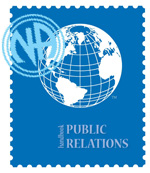This article was written for the PI News in the fall of 1996 by a member of the Regional PI Committee of Northern California, presented here as a historical document.
Public Information Behind Bars
The Marin County Fellowship has the pleasure and responsibility of maintaining one of the older H&I prison commitments in Narcotics Anonymous. These are the San Quentin meetings.
Although there are about 3,000 inmates who can attend meetings, H&I sees only 60 to 100 inmates a week plus the 200 inmates at the boot camp who are required to attend the weekly meeting. We estimate that this ongoing H&I effort reaches less than 4% of the inmates who could benefit by our program.
The PI committee unsuccessfully reached out to the staff and inmates for over 5 years. Recently, we had a face to face meeting with the San Quentin Community Resource Manager while dealing with an H&I issue. While discussing the H&I issue I mentioned that we had a PI subcommittee that was available to do presentations to the staff. He became very excited about this and helped us to set up presentations in two different areas.
The first one was done in early July to 30 teachers in the vocational education department. We will be making presentations to the parole officers followed by the counselors. Each inmate is interviewed by a counselor. Thus, it is important that they understand who we are and what we do in and out of the prison. By developing a rapport and understanding with this staff we hope to increase the number of referrals to our meetings.
We will be doing PI presentations to the three staff groups annually, at a minimum. Most of these people were unaware that we had been bringing H&I meetings into San Quentin for over 10 years. While they recognized drugs as a common problem for most of the inmates, they had very little understanding of NA. During our 90 minute presentation, our 3 person panel worked to explain what we do, how to find us, and what happens at our meetings. Handouts included:
- Staying Clean on the Outside, IP #23
- Facts About Narcotics Anonymous
- Narcotics Anonymous: A Commitment to Community Partnerships
- Narcotics Anonymous and Harm Minimization Strategies
- The list of all California NA Phonelines
We will be using the WSO Product Catalog in future presentations so staff can order NA literature for their offices if they wish.
The presentation was about 10 minutes of readings from our Schools Project followed by 80 minutes of question and answer. As usual, we spoke very little about our personal stories, and quite a bit about NA and what it has to offer. The teachers wanted to know if we would come back and do presentations to their classes, if it was OK for them to refer people to our H&I meetings, and why we were different from AA. We left a copy of the Basic Text and It Works, How and Why for the education department library.
This first presentation set the stage for monthly PI presentations to the San Quentin pre-release class. This class is made up of 33 men who will be released in the next 30 to 45 days. The class changes every month. This means we will be talking to about 400 short timers each year.
Our presentation was 90 minutes long. (This seems to be ideal for PI presentations) We again used our Schools Project readings. We also read the 12 Steps. Again we did a very short presentation with a lengthy question and answer period. Our only handouts were Staying Clean on the Outside IP #23, and the California Phoneline list.
A few of the inmates had attended NA while incarcerated. Even more had tried it while on the street. One of the things that we stressed was the importance of going to a meeting instead of the connection on the day that you get out. We also explained evidence of unmanageability by the fact that sheriff’s deputies, correctional officers, probation and parole officers and other people in the system were involved in managing their lives for them. It was also appropriate to explain that when you share in a meeting it is better to talk about feelings rather than felonies since the meetings are anonymous, not confidential.
There were a lot of questions about how to deal with feelings that are brought up by attending meetings. We emphasized the importance of getting a sponsor and developing a support group, as well as working the steps and not taking anything including someone else’s property or self respect.
We were grateful for the opportunity to reach a number of men who knew nothing about NA or had misconceptions and misinformation about NA. Since these men are being released in a short time and have made a decision to try to stay out of prison by taking this class, we feel this is an ideal venue for PI.
California has 54 prisons and over a 100 camps housing a total of over 120,000 inmates. This number is expected to rise to close to 200,000 by the year 2005. The California Department of Corrections is building 29 new prisons in the next 10 years. In the last year they have included NA as a community resource in their manuals and now recognize the importance of having our program available in their facilities. It is an excellent time for PI and H&I to come together and target this population.
PI and H&I can work together to provide meetings, inform staff and have a cohesive plan for supporting each facility.
Jeff R
Northern California Region
